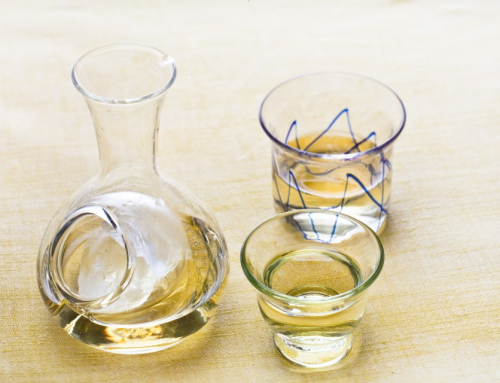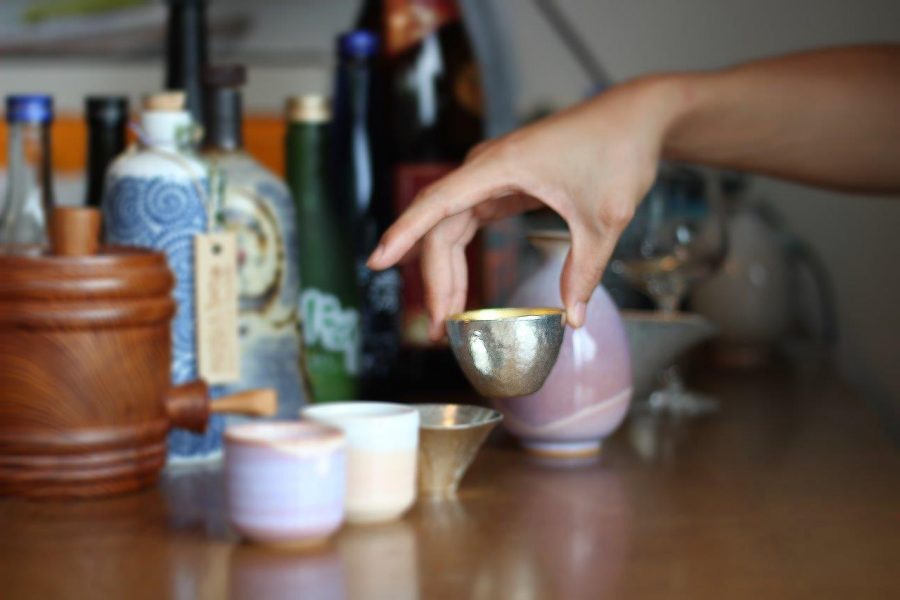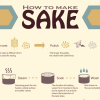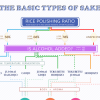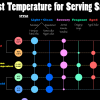Contents
- 1 Definition of Sake – What is Sake?
- 2 Sake Ingredients – What is Sake made from?
- 3 How is Sake made? Sake Making Process
- 4 How Do You Pronounce Sake?
- 5 How Do You Write / Say Sake in Japanese?
- 6 What is Alcohol Content / Alcohol Percentage of Sake?
- 7 What are the calories in Sake?
- 8 What Does Sake Taste Like?
- 9 What is the Best Temperature to Drink Sake at?
What is Sake? Sake, often translated as Saki, Japanese rice wine or rice wine, is a Japanese alcoholic beverage made from fermented rice.
Although Sake is also known as rice wine, it is rather made in a similar way to beer, using ‘rice’ instead of ‘barley’. Sake is more than just a drink; it’s a means of immersing yourself with Japanese cultures, lifestyles and historical backgrounds. So what is Sake all about? Let’s simplify it together.
Definition of Sake – What is Sake?
As mentioned above, Sake is an alcoholic beverage of Japanese origin that is made from fermented rice.
Sake Ingredients – What is Sake made from?
Sake is made from rice, water, yeasts and Koji (a type of mold, often translated as rice yeast or rice malt).
Rice
Rice used for sake is different from the one we normally eat. Sake Rice (Sakamai), also known as Shuzotekimai is larger than rice grains that we normally eat. Sake rice contains less fat and protein and has greater absorbency, thus suitable for sake making. Having said that, the rice we normally eat is often mixed, in small proportion, with the sake rice in sake making process. For most Ginjo and Dai-ginjo sakes, only sake rice is used.
Water
Water is also impeccable to sake making. Water accounts for as much as 80% of the sake ingredients, so sake breweries are very fussy about the quality of water to produce their ideal sake flavors and aromas. It’s sometimes the case that Sake breweries are located near the rivers or headsprings from which they use water for making their Sake.
Koji
Koji is a type of mold, playing an important role in the fermentation process. It converts starch into glucose. A type of mold as Koji is, it is no harm to human body just like yeasts. Koji is also used for making soy sauce, miso, mirin, vinegar and other Japanese alcoholic beverages such as Shochu and Awamori.
Yeasts
Yeasts (Kobo) are used in the fermentation process, converting glucose (sugar) into alcohol. Yeasts play a crucial role in determining the aromas of Japanese sake. This is why the type of yeast used is often listed on the label of a Sake bottle. Most types of yeasts are stored and provided from Brewing Society of Japan.
Lactic acid is also added, determining the acidity of Sake. Lactic acid is sometimes regarded as main ingredients of sake, too.
Visit ‘Sake Ingredients – What is rice made from?’ for further information.
How is Sake made? Sake Making Process
Koji (rice yeast) converts the starch in steamed rice into glucose, and yeasts convert the glucose into alcohol (i.e. fermentation). Technically, the brewing method is more complicated as it involves pressing, pasteurizing, etc. See ‘How is Sake Made?’ Page for further information.
How Do You Pronounce Sake?
Sake is pronounced as ‘sah-keh‘. It’s not ‘sah-kee’ or ‘sah-ki’, which is now a sort of English way of pronouncing Sake.
By the way, the spelling, ‘Saki’ is incorrect. It’s SAKE.
How Do You Write / Say Sake in Japanese?
Sake is written as 酒 in Kanji, or さけ in Hiragana. The Kanji ‘酒’ can also be pronounced as Shu when used as a suffix.
Sake / 酒 also means alcoholic beverages in general, so there are other names referring to Sake.
- Nihonshu (日本酒): Literally meaning ‘Japanese Sake’. This word is probably most commonly used among Japanese people when they refer to Sake.
- Seishu (清酒): This is a legal term referring to Sake. Therefore, You will see this word on the label of a Sake bottle, instead of just Sake (酒) or Nihonshu (日本酒).
What is Alcohol Content / Alcohol Percentage of Sake?
Alcohol Content in Sake is 15 – 16 percent on average (Reference 1*).
Sake Tax Regulations define the alcohol percentage of Sake to be less than 22 per cent. However, yeasts would die if the alcohol content of the Sake went above 20%, so the alcohol content of Sake can’t basically go beyond 20%.
What are the calories in Sake?
Average calories in Sake is 105 kcal / 100ml (Reference 2*). This seems to be high when comparing with beer (42 kcal / 100ml) and wine (73 kcal / 100ml). But don’t jump to a conclusion yet! The higher the alcohol percentage, the higher calories it tends to contain. Obviously, you don’t drink Sake as much as beer. See ‘Does Sake make you fat?’ Page for further information.
What Does Sake Taste Like?
It varies with types of Sake and temperature at which you drink Sake. Some might taste like a bone dry (very dry) white wine, some like a savory, rich one that reminds you of steamed rice, some like a fruity, light white wine. Because of its higher alcohol content, some non-Sake drinkers perceive Sake as a strong spirit, just like a Japanese version of vodka. But Sake is a more delicate, sensitive drink whose flavors can change dramatically at different temperatures, which is the beauty of Sake!
What is the Best Temperature to Drink Sake at?
It depends on types of Sake. Fruity, light styles like Ginjo and Dai-ginjo tend be best served cold (5-10 ℃), while savory styles like Junmai-Shu are often best served hot (40-50℃). In any case, the beauty of Sake is that you can enjoy it at various temperatures, ranging from 5 to 55 ℃. See ‘Best Temperature for Serving Sake’.
References:
1: http://www.nomooo.jp/blog/?p=9892, http://www.isochidori.co.jp/htmls/unntiku.htm, http://kurand.jp/blog/2013/12/19/sake-alcohol-by-volume-degree, 2: http://www.bic-osake.com/mame/mame/seisyu4.shtml, http://www24.big.or.jp/~nakatomo/alc_karori_hayamihyou.html, http://slism.jp/featured/liquor/liq-cause/houhou.html 3: http://www.nta.go.jp/shiraberu/senmonjoho/sake/shiori-gaikyo/shiori/2013/pdf/002.pdf 4: http://japansake.or.jp/sake/know/what/02.html 5: http://www.bic-osake.com/mame/mame/seisyu4.shtml 6: http://www.theage.com.au/articles/2003/06/03/1054406180833.html 7. http://www.waitrose.com/home/inspiration/waitrose_lovelife/weight_loss/alcohol_nutriton.html




